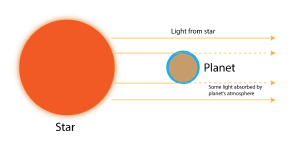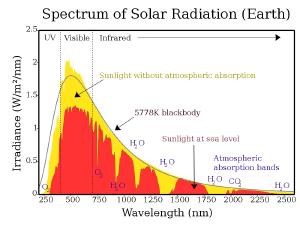Blog
Smaller Than They Appear
27 April 2020
 Brian Koberlein
Brian KoberleinAstronomers have found so many exoplanets that it’s become rather routine. What was once a feat worthy of a Nobel prize is now something done by undergraduate students. But as the technique has become more common, astronomers are pushing the limits of observation to learn even more about exoplanets. One of these involves studying their atmospheres.
You might think that to study a planet’s atmosphere you need to be able to see the planet, at least as a small point of light. But most exoplanets can’t be seen directly. We only know they are there because of their effect on starlight, but we can still study their atmospheres.
 NASA/Kepler/K2
NASA/Kepler/K2Most exoplanets are discovered using the transit method. When an exoplanet passes between its star and us, less starlight reaches our telescopes, and the star appears to dim. When we see a recurring pattern of dimming, we know it is caused by a planet. The time between each periodic dimming tells us the orbital period of the planet. It also tells us the size of the planet. The larger a planet is relative to its star, the more starlight it blocks. So the deeper a star’s dip in brightness, the larger the planet.
 Wikipedia user Nick84
Wikipedia user Nick84So how does this relate to exoplanet atmospheres? If a planet has an atmosphere, the molecules of the atmosphere will absorb light. This means not only does the planet itself cause the star to dim during transit, so does the atmosphere. But unlike the planet, the atmosphere only blocks certain wavelengths of light. The same is true of our own atmosphere. So astronomers can observe the transit of an exoplanet at different wavelengths. At certain wavelengths, the atmosphere will absorb starlight and the planet will appear larger than it actually is. By determining at which wavelengths the exoplanet appears larger, they learn the chemical composition of its atmosphere.
Understanding a planet’s atmosphere is crucial to understanding how it might have formed, and even whether it might harbor life. And we can do that without ever seeing the planet directly.